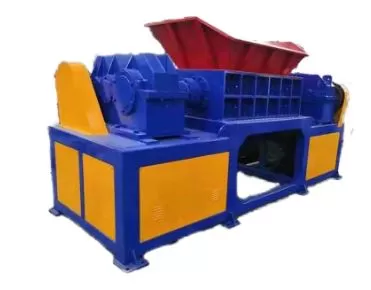Have you ever dealt with oversized lumps of material clogging up your production line? It’s frustrating, isn’t it? The inefficiency, the downtime, the mess—it can all add up to a costly headache. You need a solution that gets your material back in line, literally. And that’s where a lump breaker comes into play. But how exactly does it work?

A lump breaker is essentially an industrial crusher designed to break down large lumps into smaller, manageable pieces. It uses rotating blades or hammers to reduce the size of the material, allowing it to flow freely through your processing line. Think of it as the unsung hero of your operation, keeping things smooth and steady.
Now, let’s dive deeper into the nuts and bolts (pun intended) of how these machines actually work.
What Exactly Does a Lump Breaker Do?
Imagine a piece of material that’s gotten too big for its own good. Maybe it’s stuck together due to moisture or heat, forming a clump that’s about to cause a serious bottleneck in your production. That’s when the lump breaker steps in. It breaks down these oversized chunks, ensuring your material flows efficiently through the rest of the production line.
The design typically features rotating blades or hammers mounted on a horizontal shaft. As the material passes through the breaker, it’s subjected to shear and impact forces that fragment it into smaller pieces.
How Does the Lump Breaker Handle Different Materials?
One of the standout features of a lump breaker is its versatility. Whether you’re dealing with chemicals, food products, or even plastics, a lump breaker can handle it. The secret lies in the customization options. You can adjust the size of the screen, the speed of the blades, and even the type of blades to suit your specific needs.
For instance, when breaking down plastics, you might use a specific type of blade that’s more resistant to wear and tear. On the other hand, for food products, you’d choose a design that minimizes product loss and contamination.
What Are the Key Components of a Lump Breaker?
So, what makes a lump breaker tick? The key components include the rotor, the blades or hammers, the screen, and the motor. The rotor is the core of the machine, driving the blades that break down the material. The screen determines the final size of the material, while the motor provides the necessary power to keep everything running smoothly.
Each of these components can be customized. For example, different materials may require different rotor speeds or blade designs to achieve the best results.
Why Is Regular Maintenance Crucial?
Just like any piece of industrial equipment, a lump breaker requires regular maintenance to operate at peak efficiency. Over time, the blades can dull, the motor can wear down, and the screen can become clogged. Regular inspections and maintenance ensure that the machine continues to function properly and that your production line remains smooth and efficient.
Ignoring maintenance can lead to increased downtime, reduced efficiency, and even potential safety hazards. Keeping your lump breaker in top shape is key to a trouble-free operation.
How Can a Lump Breaker Improve Your Bottom Line?
Investing in a high-quality lump breaker isn’t just about avoiding problems—it’s about improving your overall efficiency and profitability. By ensuring that your material flows smoothly through your production line, you can reduce downtime, minimize waste, and ultimately increase your output. This leads to better profitability and a quicker return on investment.
Moreover, a well-maintained lump breaker reduces the need for expensive repairs and replacements, further improving your bottom line.
What Should You Consider When Choosing a Lump Breaker?
Not all lump breakers are created equal. When choosing a lump breaker, consider the type of material you’re processing, the desired final size, and your production capacity. Also, think about the ease of maintenance and whether the machine can be easily integrated into your existing production line.
Customization is key here. A lump breaker that’s perfect for one operation might not be ideal for another. Make sure you’re working with a manufacturer who understands your specific needs and can provide a tailored solution.
Conclusion
In the world of industrial processing, a lump breaker is an invaluable tool. It keeps your production line running smoothly, handles a variety of materials, and can be customized to meet your specific needs. With proper maintenance, it can improve efficiency and boost your bottom line, making it a smart investment for any operation.
That’s it—now you know exactly how a lump breaker works and why it’s essential for your business.
